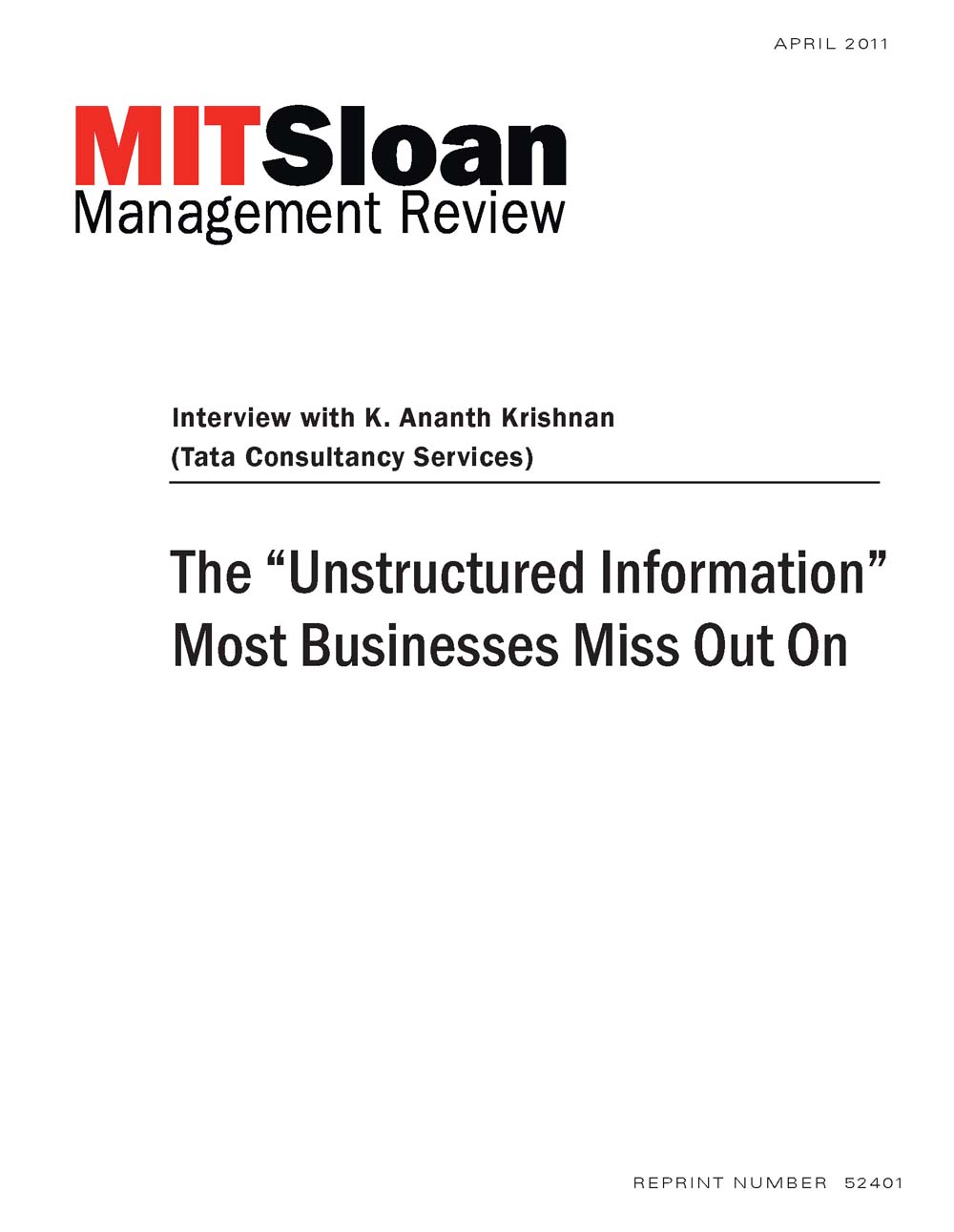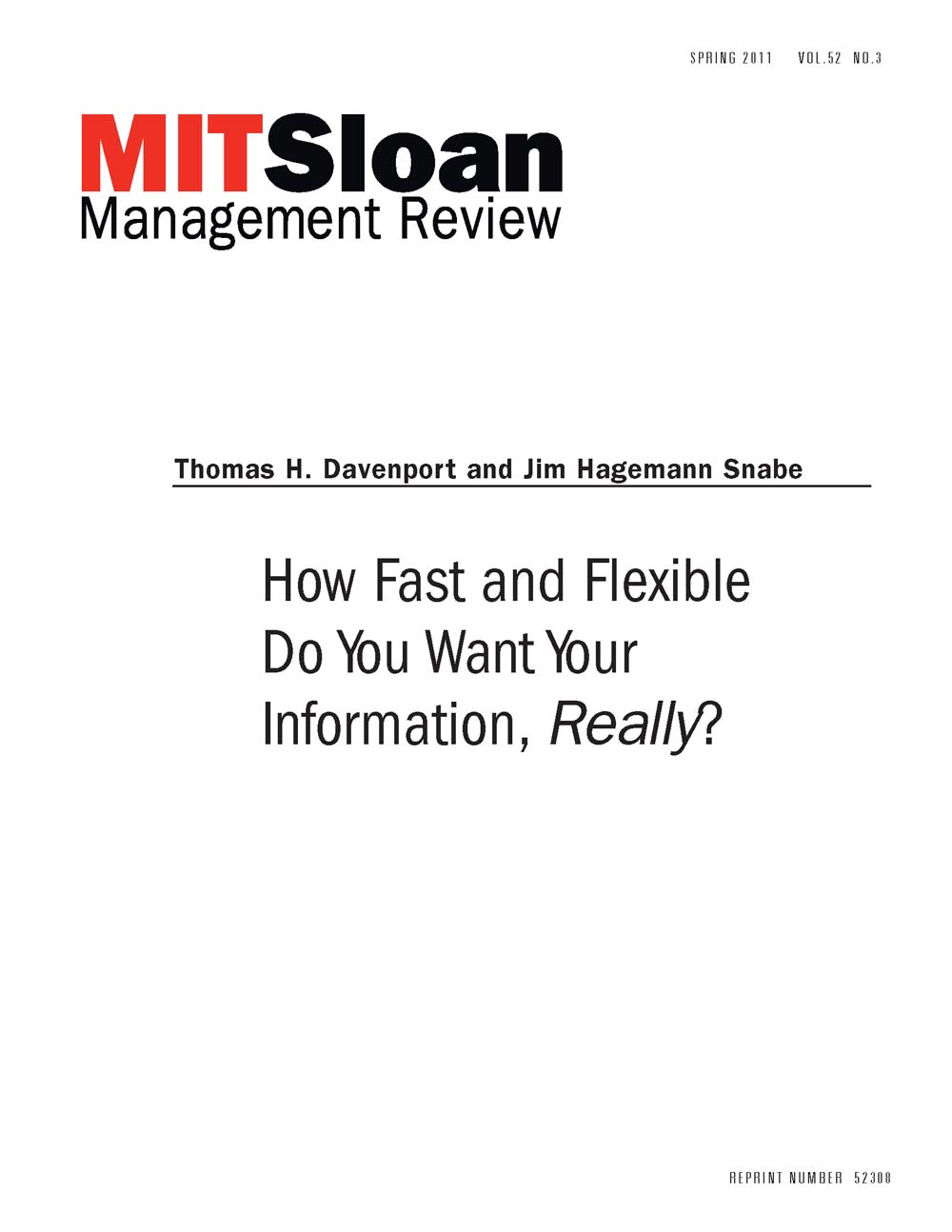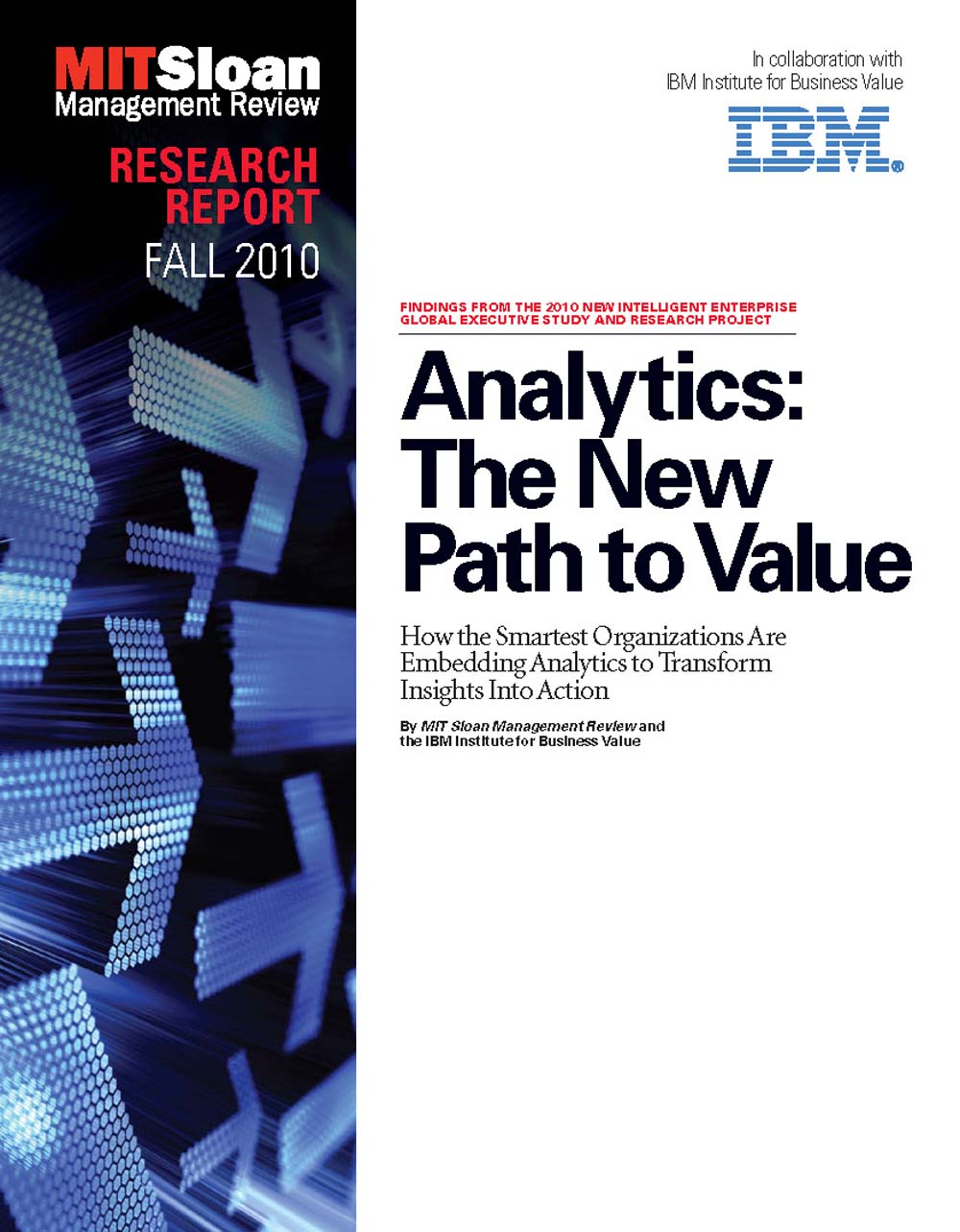When Paul Barth and Randy Bean launched NewVantage Partners in 2000, most organizations were not paying a lot of attention to data and analytics. That's changed. As internal customers realize its value of data, the demand for access to the flood of accumulated data has risen almost as quickly as the issues of security and governance surrounding it. Though many organizations' analytics projects are CIO-driven, the partners have seen more success when organizations "start in the middle" with a "real tangible business problem." Solving something quickly, that gives quantifiable results, can help build a data management practice that ultimately influences the entire enterprise. Then organizations can begin to gain the kind of competitive advantage that analytics promises. Barth and Bean spoke with David Kiron, executive editor at MIT Sloan Management Review, about the importance of governance policies and structures, the role of culture in the success of initiatives, and the promise of value that many organizations are realizing from their analytics' innovations.
Data, AI, & Machine Learning P. 9
Page 20 of 21
-
Creating Business Value with Analytics
Companies experienced in analytics use are increasingly gaining competitive advantage.
-
First Look: The Second Annual New Intelligent Enterprise Survey
How are companies using analytics in their decision making? To what extent are managers able to access the data they need? What are the key challenges, and how have the main business objectives changed? MIT Sloan Management Review and the IBM Institute for Business Value teamed up to ask business executives, managers and analysts to reflect on the role data plays within their organizations, and received more than 4,000 responses, representing every major industry and every region of the world. Complete results of the second annual survey are scheduled for publication in the fall 2011 issue, but this article provides some preliminary findings. A few early results stand out: Only about four in 10 respondents have access to the information they want; almost one-fifth say they have limited or no access to the data they need to be successful. The three biggest challenges people cite in using analytics are the difficulties of "integrating internal data across silos," the time and cost of performing analytics and the lack of skills to interpret and leverage the data. While the top three business objectives organizations cite for using analytics have not changed since last year's survey, their order of importance has changed: Last year, respondents said the most important objective was "innovating to achieve competitive differentiation;" this year, the No. 1 priority is "growing revenue," followed by "reducing costs and increasing efficiencies." Innovating to achieve competitive differentiation fell to No. 3. All told, the 2011 survey contained 27 questions. The charts in this preview article represent the answers to just eight of those, presented as simple raw data, clean and uncut. In the complete report, the new information will be combined and refined and, in many cases, compared to last year's data to give readers a snapshot of what's changed since our initial survey and the opportunity to benchmark their organizations in relation to their peers.
-
The "Unstructured Information" Most Businesses Miss Out On
Businesses' ability to process numbers in "well-behaved rows and columns" goes back 40 years, notes K. Ananth Krishnan, chief technology officer of Tata Consultancy Services, one of the largest companies in India. In this interview with Sloan Management Review editor-in-chief Michael S. Hopkins, Krishnan explains why figuring out how to mine and process the information in text, video, and audio is the new frontier.
-
How Fast and Flexible Do You Want Your Information, Really?
We should aim not for faster information but faster decision making — not the same things.
-
Why Companies Have to Trade "Perfect Data" for "Fast Info"
All companies collect data, and they want to act on that data, but they also want to make sure it is accurate. Better to wait on a decision until you have the absolutely correct information than act based on partial information. That might make sense, but it's the wrong way to go, say the top two executives at Attivio, a privately-held enterprise software company. The problem with focusing on getting the numbers too right is that most companies sacrifice speed for accuracy. Companies have been trained to think about data all wrong, say Ali Riaz and Sid Probstein, CEO and CTO respectively of Attivio. Analytics don't have to be based on super-precise data, they say. "The report doesn't have to be perfect. It needs to capture the behavior, not the totality of it." For analytics to work, companies need a new philosophy around leadership, decision-making, and performance management. One important element is the ability to consider a bigger picture and frame within which to consider the new kinds of data that is being gathered. Riaz and Prostein spoke with MIT Sloan Management Review editor-in-chief Michael S. Hopkins about the stifling downside of the quest for perfect data, why "eventually consistent" is a concept every company should take to heart, and how to deal with the need for speed.
-
Big Data, Analytics and the Path From Insights to Value
To understand the challenges and opportunities associated with the use of business analytics, MIT Sloan Management Review, in collaboration with the IBM Institute for Business Value, conducted a survey of more than 3,000 business executives, managers and analysts from organizations located around the world. The survey was part of the 2010 New Intelligent Enterprise Global Executive Study and Research Project, which attempts to understand better how all organizations are trying to capitalize on information and apply analytics today and in the future. One of the most significant findings is that there is a clear connection between performance and the competitive value of analytics. Survey respondents who agreed that the use of business information and analytics differentiated them were twice as likely to be top performers. Three stages, or capability levels, of analytics adoption emerged from the research: aspirational, experienced and transformed. The article provides a comprehensive description of each, enabling organizations to identify where they fall in the continuum. In addition, the authors include suggestions for the best entry points and techniques for each level, and measures to avoid the most common pitfalls. Based on insights from the survey, case studies and interviews with experts, the authors also describe an emerging five-point methodology for successfully implementing analytics-driven management and rapidly creating value–as leading businesses are already managing to do. These include (1) focus on the biggest and highest data priorities, (2) within each of those priorities, start by asking questions, not by looking at the available data, (3) embed insights into business processes to make them more understandable and actionable, (4) keep existing capabilities and tools while adding new ones and (5) develop an overarching information agenda that enables decision making and strategy for the future.
-
Matchmaking With Math: How Analytics Beats Intuition to Win Customers
Credit insurance and debt protection product seller Assurant Solutions ran a classic customer service call center–operationally optimized, “skills-routed,” managerially enlightened. But when it explored analytics-based approaches to rethinking how the center worked, a strange thing happened: The success rate for customer interactions tripled. According to Cameron Hurst, vice president of Targeted Solutions at Assurant, the result surprised them. “We learned that operational efficiency and those traditional metrics of customer experience like abandon rate, service levels and average speed to answer are not the things that keep a customer on the books.” They found instead that technology could assist the company in retaining customers by leveraging the fact that some customer service reps are extremely successful at dealing with certain types of customers. Matching each specific in-calling customer to a specific customer service rep made a huge difference. Science and analytics couldn’t quite establish why a particular rapport would be likely to happen, but they could look at past experience and predict with a lot of accuracy that a rapport would be likely to happen. In this SMR case-study interview, Hurst explains how Assurant Solutions figured out the right questions to ask, used analytics to focus on new ways to match customers with reps and figured out the best ways to solve the problem of conflicting goals.
-
Analytics: The New Path to Value
A global survey by MIT Sloan Management Review and the IBM Institute for Business Value sees threats and opportunities in the data deluge.
-
10 Insights: A First Look at The New Intelligent Enterprise Survey
How are organizations attempting to compete on their ability to capture, analyze and act on information? How do you win with data and analytics? MIT Sloan Management Review conducted a global survey of nearly 3,000 executives to learn how they’re turning the data deluge and analytics into competitive advantage–or trying to, anyway. The major comprehensive analysis is still to come, but in these two companion articles (“10 Insights” and “10 Data Points”), readers will find an early snapshot of how managers are answering the most important question organizations face. To answer that question, SMR has teamed with the IBM Institute for Business Value to build a new innovation hub and research program called “The New Intelligent Enterprise.” Through the SMR and IBM IBV collaboration, The New Intelligent Enterprise aims to help managers understand how they can capitalize on the ways that information and analytics are changing the competitive landscape. What threats and opportunities will companies face? What new business models, organizational approaches, competitive strategies, work processes and leadership methods will emerge? How will the best organizations reinvent themselves to use technology and analytics to achieve novel competitive advantage? How will they learn not only to be smarter, but to act smarter? This article reveals preliminary results from the first annual New Intelligent Enterprise Survey. The responding executives told us about their top management goals, their uses (and misuses) of information and analytics as they attacked those goals, and the management practices in play in their organizations. Among the findings discussed: - Innovation is identified by executives as their organizations’ primary business goal–significantly ahead of “growing revenue,” “reducing costs” and “acquiring customers.” - A strong correlation appeared linking an organization’s analytics sophistication and its likelihood of outperforming its industry competitors. - Analytics methods are evolving to include more advanced techniques, and especially more visual presentation and simulation “to bring information alive.” - Far from being a mainly technological phenomenon, The New Intelligent Enterprise requires significant changes to corporate culture and the nurturing of new kinds of talent, if it is to succeed.












